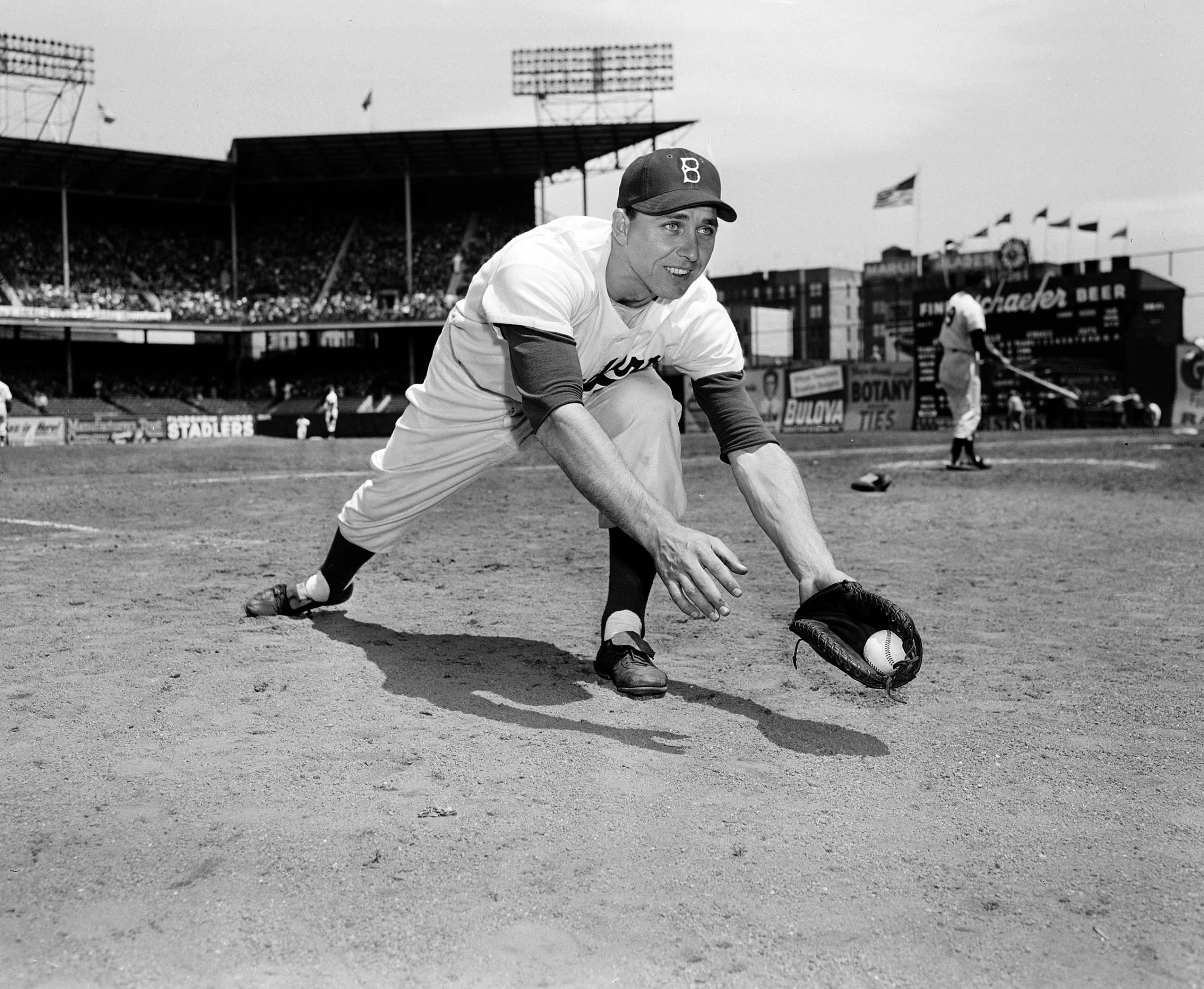Gil Hodges — my hero

It’s nice to have a bridge named after you, especially one so eye-popping if you catch it at the right times. But better for a ball player is to be voted into the Hall of Fame. I, like many Dodger fans, have thought it a head scratcher as to why Hodges hadn’t got there. Now he has been voted in and will this spring be enshrined where he should be. We’ll get to why in a bit, but first the memories.
I revered Gil Hodges differently than I did my several other heroes who played for Brooklyn’s Dodgers in the ‘50’s and early ‘60’s. He was like the Zen first baseman. He cast a calm presence over the field. When there was a scuffle that presence showed itself. When Hodges joined the scrum, it stopped. It seemed like it stopped just because he said it should. For that era of baseball, he was a big guy, 6’1”, 200 lbs. Ted Kluszewski was bigger, but not better. Hodges’ right hand didn’t seem to fit in the glove. The heel of his hand always showed as he wielded that oft-cited gold glove. When he was in a slump there was no bat-breaking, no bat-throwing. It was, so to speak, his cross to bear. When he made out or struck out at crucial moments in crucial games, he left the field with an air that didn’t say, “I failed,” but said “I’ve failed my teammates.” I guess when you’ve been in the thick of fighting in the Pacific Theatre and decorated for valor, there’s not much you’re afraid of. He was a Marine and like most Marines he was always a Marine. If there was a role model for a kid on the field, Hodges was it.
Hodges was deceptively strong. When he connected, the fielder had best be sharp. This was before the days of immediate stats that tell the speed a ball leaves the bat, how high and far it goes. When Hodges connected, it was usually a shot no matter its trajectory. When it left the yard, it left quickly. He was also nice. Hodges seemed to be as nice off the field as he was on it. He was an easy autograph. He’d kid around with kids clustered by the railing during batting practice. He was the “strong, silent type” but an approachable version of it.

Brooklyn Boro
View MoreNew York City’s most populous borough, Brooklyn, is home to nearly 2.6 million residents. If Brooklyn were an independent city it would be the fourth largest city in the United States. While Brooklyn has become the epitome of ‘cool and hip’ in recent years, for those that were born here, raised families here and improved communities over the years, Brooklyn has never been ‘uncool’.